***I haven't shared much regarding techniques for quit a while, my recent posts being more about the fish with which I am so enamored. I'm going to start sharing more specifically what I've learned for the various species I've caught.
We all know fish in different waters can behave differently and have different preferences. But I think overall this will give folks who want to try for certain species more info that can hopefully get them started off on the right foot, rather than going blindly. We can all shorten our personal learning curve by first learning from the experience of others.***
This blog post is about Common Carp.
 |
| 35" Common Carp on Fly |
It definitely helps tremendously if the water is clear enough for sight-fishing....where you can cast toward an individual or group of fish, and see how they react. I've caught fish that I didn't see first, but the visible fish are your best and easiest targets.
Common Carp are typically more active in warmer water, but folks catch them during the winter as well, sometimes even under the ice.
Sometimes Carp seem to rest. Just sitting on the bottom not moving. In such a situation, they are unlikely to eat a fly, so move on. When they are actively feeding, an not just swimming from one place to another, that's when you can catch them.
The best place to look for them are in shallow waters near shore, where they will come in to feed. If you don't spot them right away, also look for mud trails in the water that show a carp may be feeding there, and sometimes they also produce a stream of bubbles when they are feeding. Look for any and all signs.
I use a 9' long 6 wt fly rod most of the time. I've also had my butt handed to me by some larger carp, where a 7wt or 8wt would certainly have helped land the fish more quickly. These fish are very strong. They are also smart, so I prefer to use 6 lb or 8 lb test Fluorocarbon tippet.
For fly patterns, beadchain eye nymph-like patterns, such as a John Montana's Hybrid Carp Fly in a size #10 to #6, have been my most consistent producers. I've caught them other ways as well... from microjigs under an indicator, to woolly buggers. On occasion a fly moving steadily will take a carp, but the highest percentage game is to use the "drag and drop" technique (cast beyond the fish, then swim the fly shallow in the water until it is nearly over the head of the carp, then let the fly drop down to the bottom, within a foot or so of the fish's mouth). Carp are used to picking food up off the bottom, so let them.
In cloudy, muddier water, sometimes a fly with a body of a shiny, flashy material, can help the carp spot the fly. Otherwise, flies of dark, natural colors often work best, although I've caught some on chartreuse as well.
I would guess that egg patterns could also work well.
Here's a few pics of Common Carp I've caught while flyfishing:
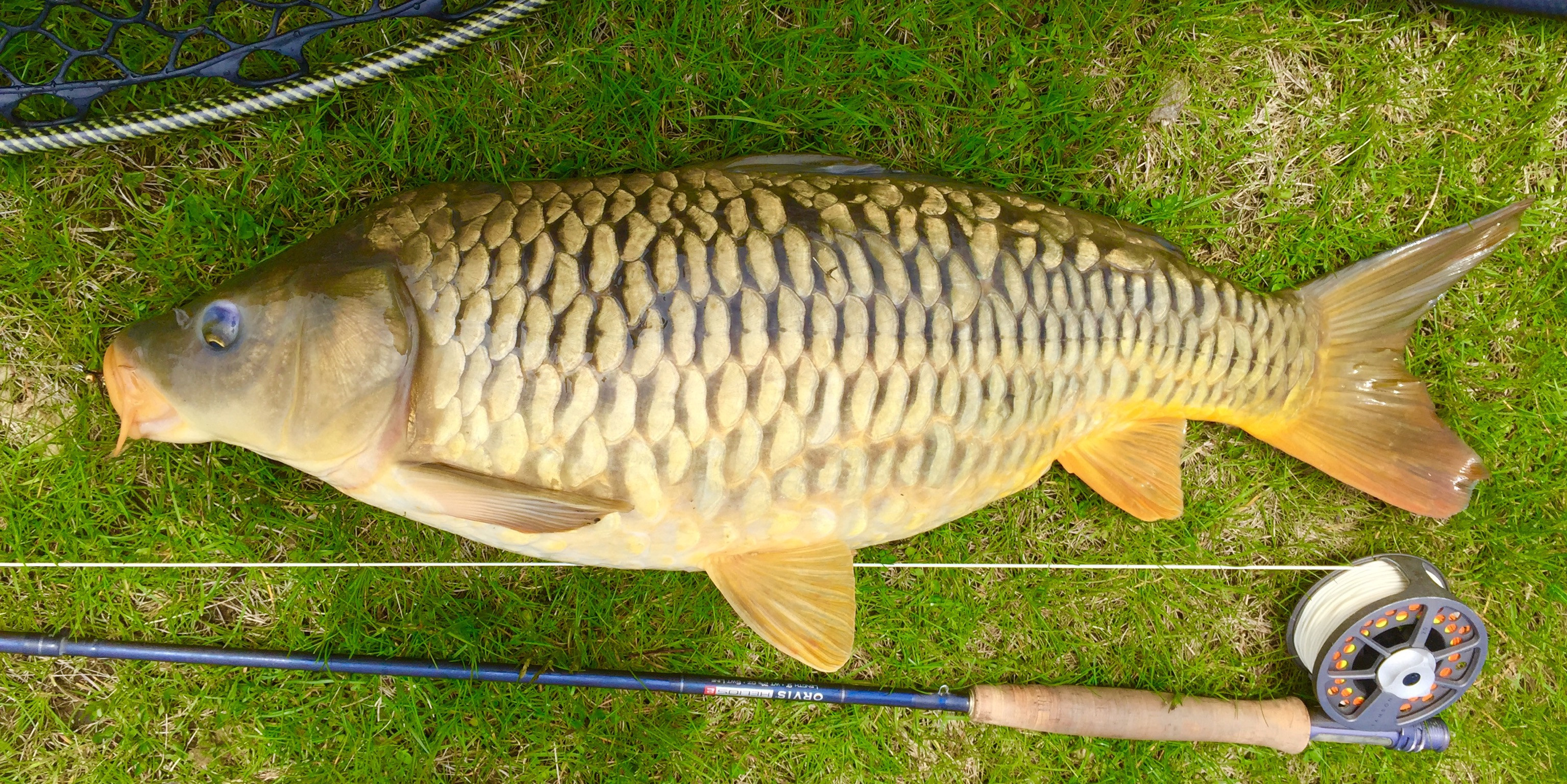 |
| Full-Scale Carp |
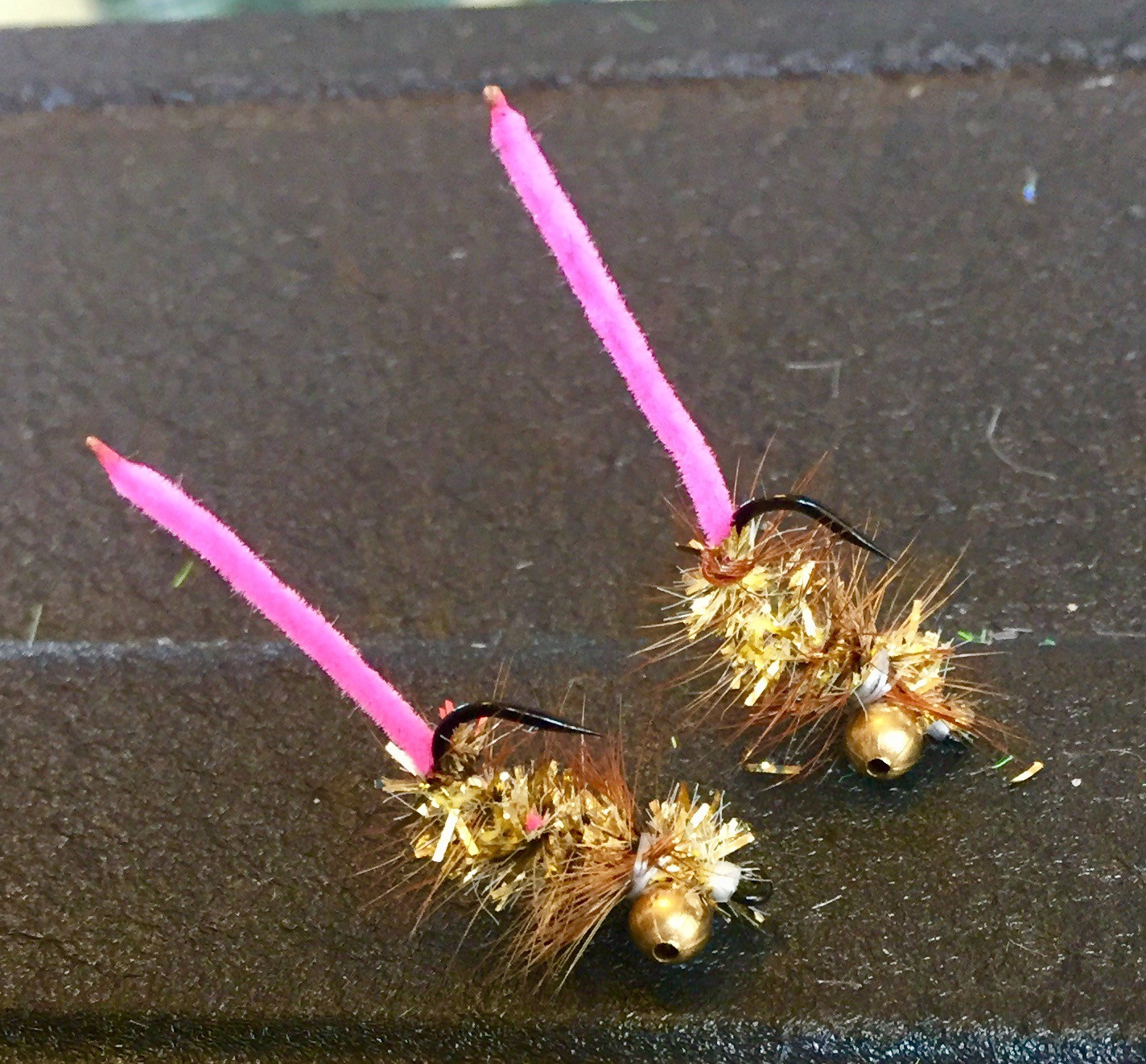




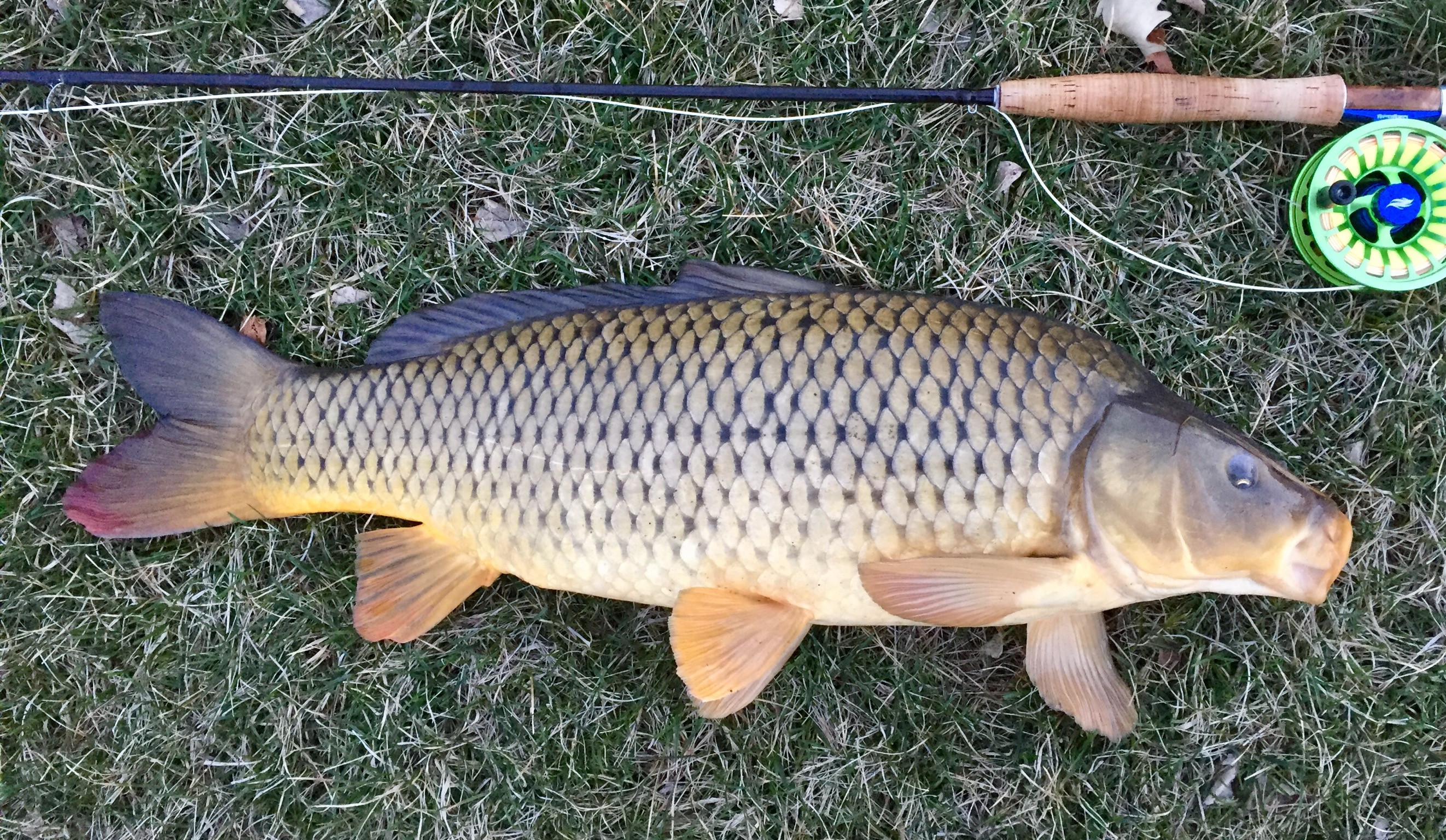
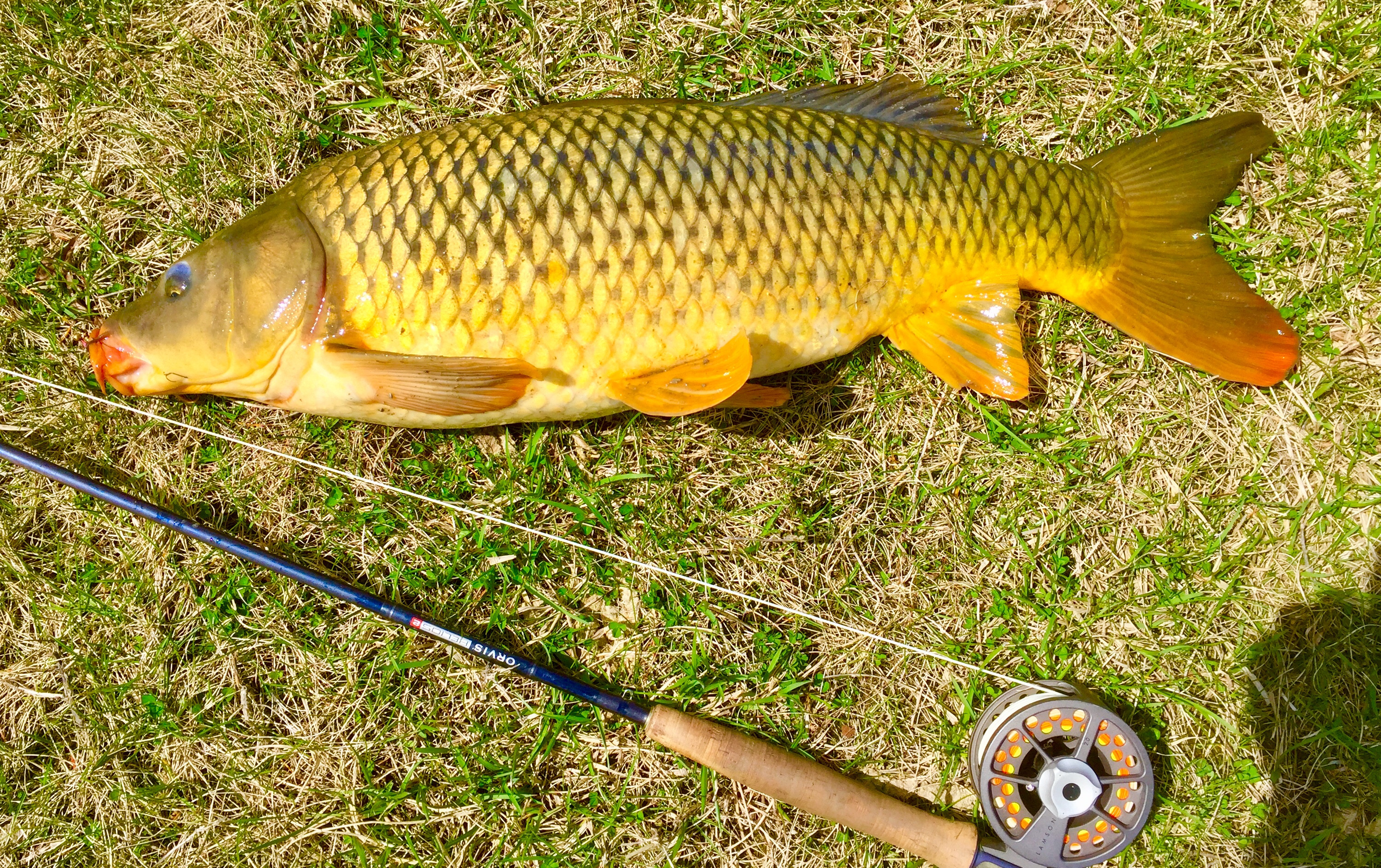
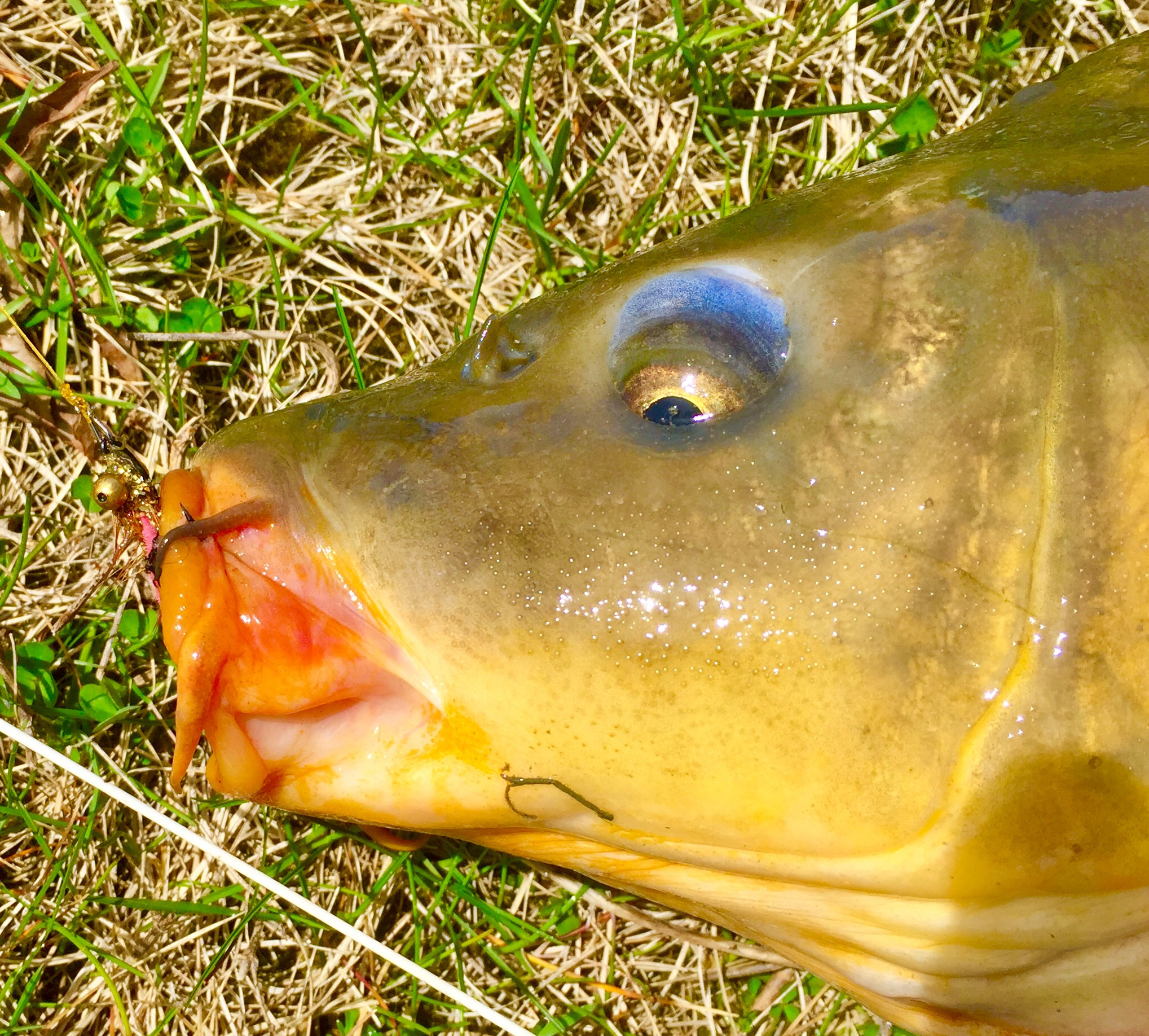











No comments:
Post a Comment